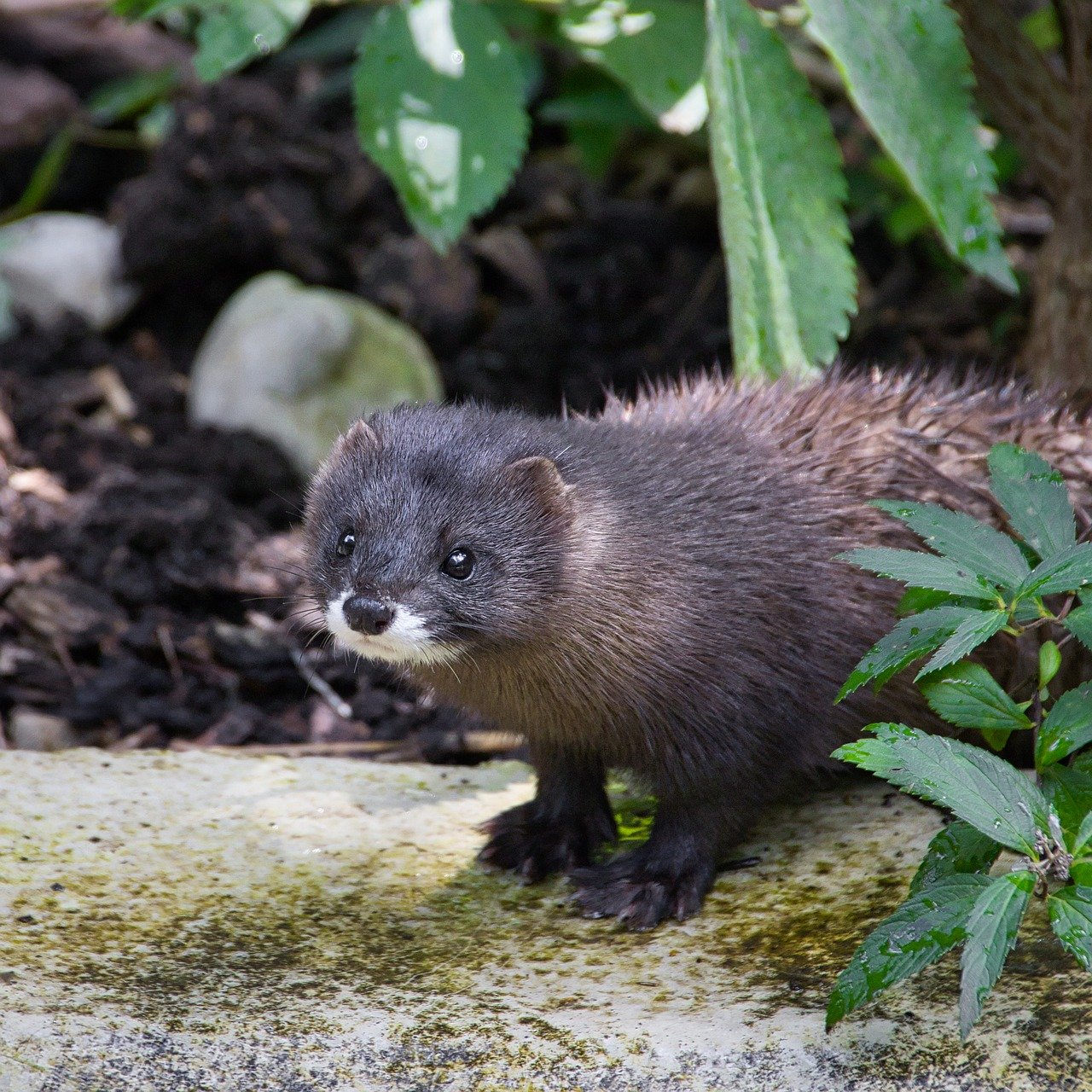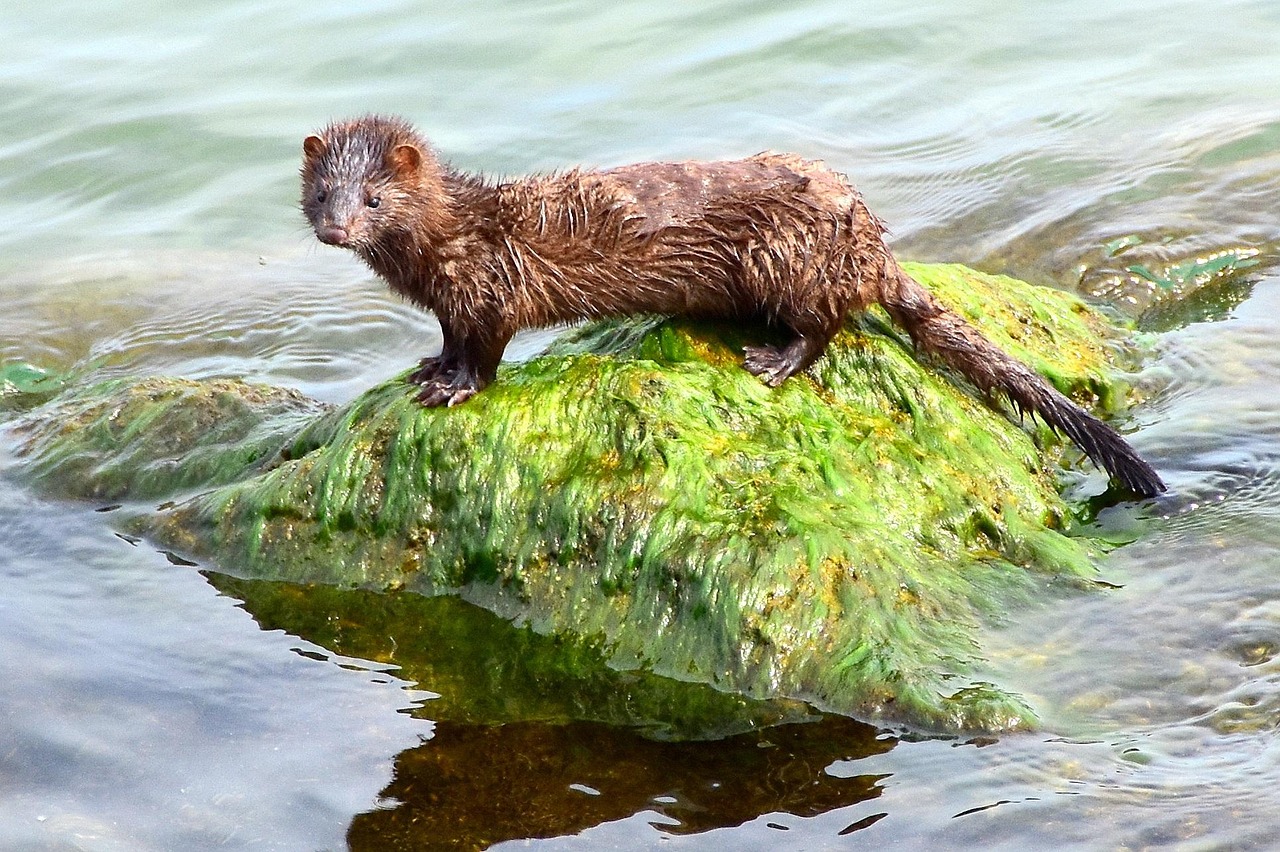Mink (Mink)


Characteristics:
The mink is a small, slender member of the weasel family with short legs and a long body. Body length 30–45 cm, tail 10–20 cm, and weight 0.5–1.5 kg (males are significantly larger than females). The fur is dark brown to almost black, with a white patch on the chin and sometimes on the chest. The fur is thick, glossy, and highly water-repellent. The mink has partially webbed feet, making it well adapted to an aquatic lifestyle.
Habitat:
Originally from North America, the mink was introduced to Sweden in the early 1900s for fur farming. Escaped and released animals have since spread across most of Sweden, especially along coasts, rivers, lakes, and wetlands — but it is absent on Gotland.
Behaviour:
The mink is solitary and territorial, and mostly nocturnal, though it may also be active at dawn and dusk. It is an excellent swimmer and diver, rarely straying far from water. It shelters in holes among rocks, under tree roots, or in old burrows made by muskrats or rats.
Diet:
The mink is carnivorous and hunts both in water and on land. It feeds on fish, crayfish, frogs, birds, eggs, small mammals, and insects. It often kills more than it can eat and stores excess food for later.
Reproduction:
Mating takes place in March–April, and after a gestation period of about 40 days, the female gives birth to 4–6 kits in May–June. The nest is lined with grass, moss, and fur. The young leave their mother in late summer.
Tracks and signs:
- Tracks: Five toes with claw marks, similar to the pine marten but narrower. Front paw about 3–4 cm wide; step length 15–25 cm.
- Droppings (scat): Black, twisted, often containing fish remains and with a strong odour; found on rocks or near water.
- Den: Under stones, roots, or in riverbanks near water.
- Prey remains: Fish bones, feathers, or crayfish shells near the shoreline often indicate mink activity.
Distribution:
The American mink is found throughout Sweden except on Gotland and has spread across most of Europe. It is classified as an invasive species, as it competes with native predators like the European mink, otter, and pine marten, and can negatively impact waterfowl populations.
Hunting:
The mink may be hunted year-round because it is considered invasive and harmful to native wildlife. Common hunting methods include:
- Trapping with approved lethal or live traps.
- Stalking or ambush hunting along shorelines.
- Hunting with small dogs trained for vermin or burrow work.
Mink fur is dense and glossy, and still occasionally used in the fur trade.
Firearm class (Sweden):
Mink hunting is carried out with class 1-4 rifles or shotguns (common pellet sizes no. 5–7).
Think for the hunting exam:
- Invasive species, originally from North America.
- Recognised by dark fur and white chin patch.
- Lives near water, excellent swimmer and diver.
- Feeds on fish, frogs, birds, and small mammals.
- Tracks: five toes with claw marks along water edges.
- Hunted year-round with class 1-4 rifle, shotgun, or traps.
